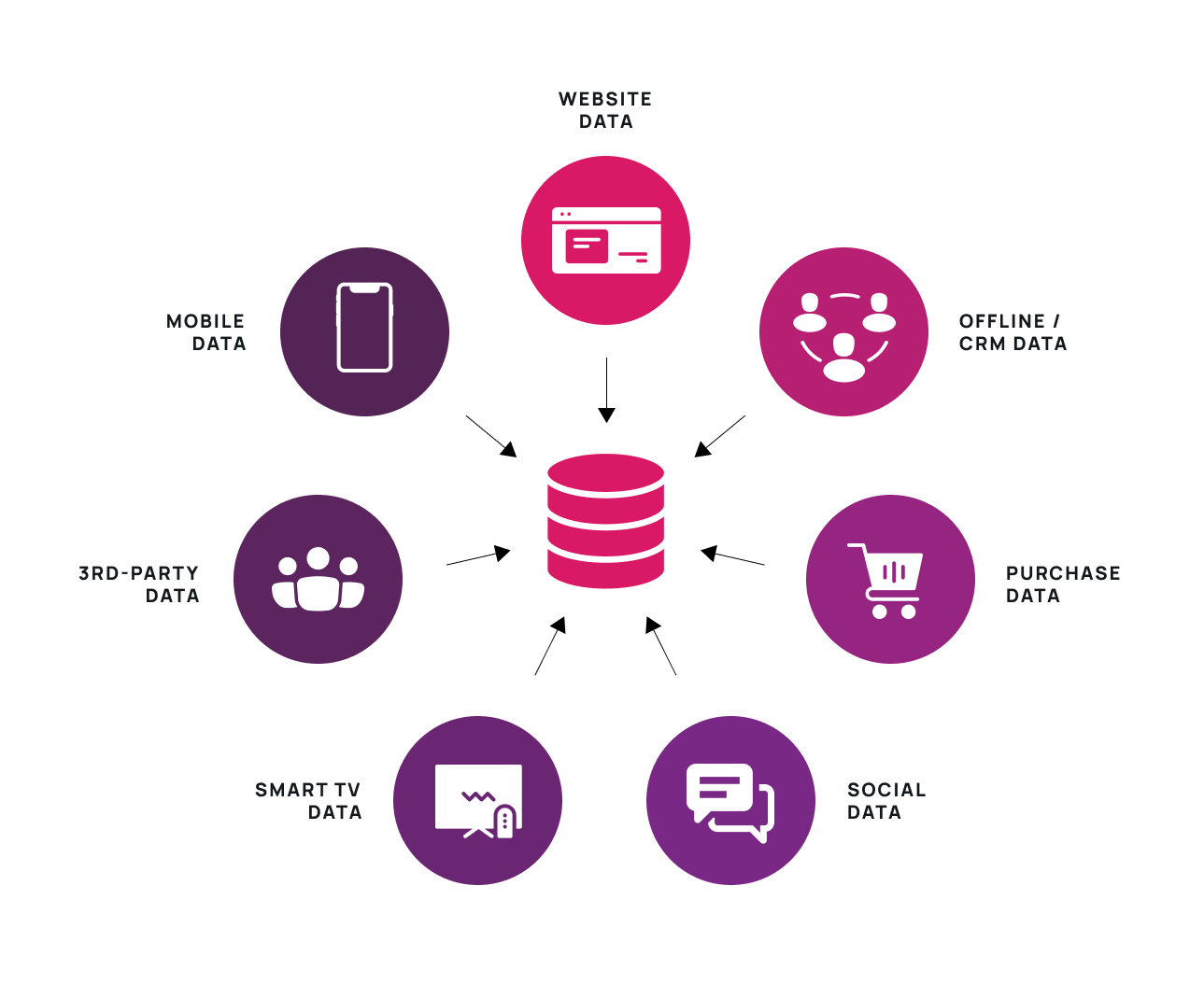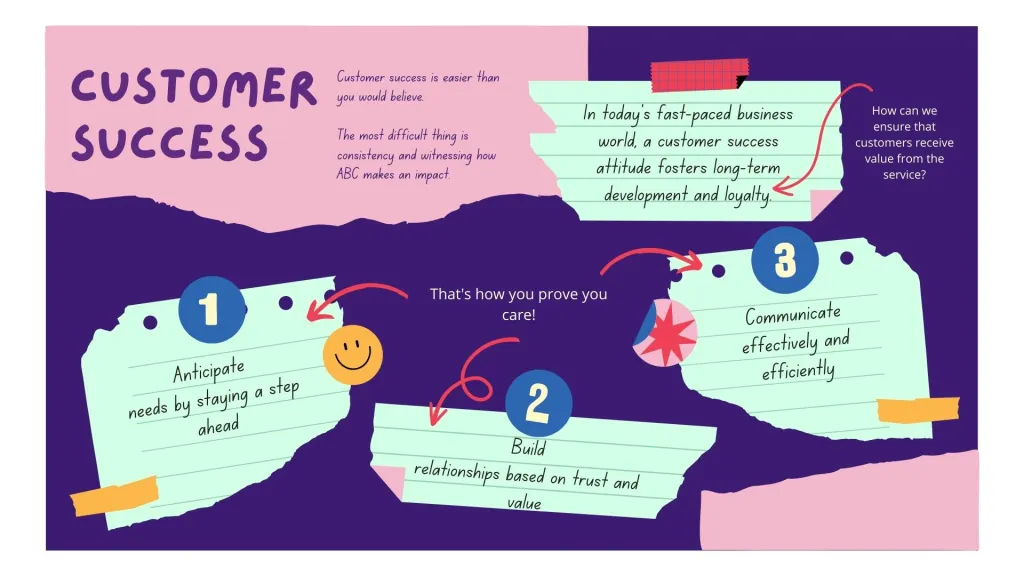Leveraging data gathered from sources like as websites, mobile applications, and registration portals is critical for efficiently addressing prospective consumers.
In the continuously changing field of digital marketing, technology is critical in honing client engagement methods. Marketers no longer rely simply on first-party data; instead, they use second and third-party data from a variety of sources, including cookies, CRM systems, online and offline campaigns, site analytics, and different digital platforms.
The Data Management Platform (DMP) is at the heart of this process, acting as a centre for gathering and categorising consumer data based on demographics, interests, age groupings, and preferred communication channels.
Recognizing the escalating demand for DMPs in driving business success, organizations are actively seeking reputable providers who can deliver quality solutions. In this article, we’ll spotlight the top five data management platforms (DMPs) garnering widespread acclaim in 2024.
Let’s have a look!

SAS is a data management industry mainstay, renowned for its ability to fine-tune and modify data to fit clients’ unique requirements. SAS enables customers to develop their data strategy for more successful consumer interaction by providing data updates, adjustments, and extensive analytics.
One of the most notable advantages of SAS’s Data Management Platform (DMP) is its seamless integration of Hadoop technology with proprietary data collecting methods. This combination provides strong data handling capabilities, allowing for fast processing of huge datasets while ensuring data integrity.
SAS Data Management runs on an open-source framework, which improves data security while allowing users to conduct operations across a wide range of hardware configurations. This adaptability not only enhances scalability but also optimises performance.
Pros:
- Customisation: SAS allows customers to customise and change data based on their own requirements, resulting in bespoke analytics and insights for distinct business needs.
- Integration: The use of Hadoop technology improves data processing capabilities, allowing for effective handling of huge datasets and enhancing overall data management efficiency.
- Security: SAS prioritises data security by leveraging open-source frameworks, offering powerful protection against possible attacks and delivering piece of mind to enterprises managing sensitive information.
- Scaling: The platform’s versatility enables easy scaling across various hardware configurations, meeting changing business demands without losing performance or functionality.
Cons:
- Cost: The licensing costs for SAS’s data management platform are relatively high, which may pose a barrier to entry for smaller businesses or startups with limited budgets.
- Complexity: The platform’s extensive functionality may present a steep learning curve for users, requiring significant time and resources to fully master, potentially delaying the realization of its full potential.
- Dependency on Proprietary Solutions: While SAS integrates open-source frameworks, its reliance on proprietary data collection methods may limit interoperability with other systems, potentially creating compatibility issues for businesses utilizing diverse data sources.
- Maintenance Overhead: Managing and maintaining SAS’s data management platform may require dedicated resources and expertise, adding to operational overheads and potentially increasing the total cost of ownership over time.
In summary, despite these considerations, SAS remains a formidable contender in the data management sphere, offering advanced capabilities for businesses seeking comprehensive data management solutions tailored to their specific needs.

Cloud success stories are ubiquitous, and Cloudera’s data management platform is no exception. It enables customers to store data on private clouds, catering to diverse business needs.
Key features of Cloudera’s DMP include advanced Artificial Intelligence (AI) technology, facilitating the provision of ready-to-use data across various categories.
Moreover, it offers robust data filtering capabilities and access to deep resources, including data monitoring, analysis, alert management, and configuration tools.
Pros:
- Private Cloud Storage: Cloudera enables clients to securely store data on private clouds, assuring security and compliance.
- Advanced AI Technology: The incorporation of AI technology improves data processing capabilities, allowing for more efficient data utilisation and analysis.
- Comprehensive Filtering: The platform provides comprehensive data filtering capabilities, allowing customers to extract meaningful insights from large datasets.
- Deep Resource Access: Cloudera gives access to a variety of resources for data monitoring, analysis, and configuration, allowing for more effective data management.
Cons:
- Complexity: Users inexperienced with complex data management technologies may face a steep learning curve while using Cloudera’s platform.
- Cost: Implementing and maintaining Cloudera’s DMP may incur considerable costs, particularly for smaller organisations or startups.
- Dependence on Cloud Infrastructure: Users that rely on Cloudera’s platform may have issues with cloud infrastructure stability and downtime.
- Limited Scalability: Some customers may find Cloudera’s platform less scalable than alternative cloud-based options, especially for quickly rising data requirements.
Regardless of these factors, Cloudera’s data management platform remains a tempting alternative for enterprises seeking advanced AI-driven solutions for their data management needs.

Lotame emerges as a top choice for organisations looking to increase consumer engagement. Its data management technology excels in aggregating client data from a variety of sources, such as cookies, emails, registrations, and social media profiles that share business interests. It also incorporates data from CRM systems, internet and offline marketing, and other sources.
Pros:
- Comprehensive Data Aggregation: Lotame rapidly collects consumer data from many sources, giving organisations a comprehensive perspective of their target population.
- Enhanced Customer Engagement: The platform’s powerful analytical capabilities allow firms to adapt their marketing efforts to increase engagement and conversion rates.
- Versatility: Lotame caters to merchants, publishers, and marketers equally, providing a flexible solution for a variety of business needs.
- Cost Efficiency: Lotame’s technology removes excessive costs associated with unsuccessful client targeting strategies, hence increasing ROI.
Cons:
- Complexity: Users may have difficulty understanding Lotame’s advanced data management capabilities, which need some level of technical skill.
- Data Privacy problems: Combining data from diverse sources causes privacy problems, needing strict data security procedures to retain consumer confidence.
- Integration Challenges: Integrating Lotame’s platform with current systems and workflows may result in compatibility challenges, necessitating more time and resources for a smooth deployment.
- Dependency on Data Sources: Lotame’s efficacy is strongly dependent on the availability and quality of data from external sources, which may restrict its performance in certain cases.
Despite possible problems, Lotame’s data management platform is still a vital tool for firms looking to improve consumer interaction and marketing initiatives.

Adobe is a data management industry leader, providing retailers with effective consumer interaction tactics across several media.
Pros:
- Comprehensive Connectivity: Adobe enables seamless links between online and offline resources, enabling complete consumer involvement.
- Innovative AI Technology: Using Adobe Sensei, the platform uses superior artificial intelligence and machine learning to categorise clients and create robust, country-specific profiles.
- Customisation Capabilities: Adobe’s solutions enable retailers to personalise consumer interaction tactics to unique company demands and geographical preferences.
- Integration with the Adobe Ecosystem: Adobe’s data management solutions work seamlessly with other Adobe products to improve cross-channel marketing capabilities.
Cons:
- Complexity: Implementing Adobe’s complex data management solutions may necessitate technical knowledge, creating a learning curve for certain retailers.
- Cost: The complete functionality of Adobe’s platform may come at a greater cost, thus limiting access for small enterprises.
- Data Privacy issues: Collecting and analysing consumer data generates privacy issues, needing stringent data protection safeguards to retain customer confidence.
- Dependence on External Data Sources: Adobe’s efficiency is dependent on the availability and quality of data from external sources, which might affect performance in certain instances.
Despite these factors, Adobe remains a leading choice for retailers wanting sophisticated data management solutions for improved customer interaction and focused marketing initiatives.

The data management platform allows organisations to effortlessly produce cross-channel media inside a unified framework, reducing the need to switch between numerous platforms.
Pros:
- Unified Cross-Channel Media: The platform simplifies the development of cross-channel media through a single interface, increasing productivity and effectiveness.
- Rich information: Google Audience 360 offers important information that help organisations develop effective plans and form brand alliances for future success.
- Third-Party Data Collation: The platform enables users to collect data from third-party exchanges such as guest blogs, business material, and emails, which enriches the dataset for more thorough analysis and targeting.
- Integration with Google Ecosystem: Google Audience 360 connects smoothly with other Google products, allowing for synergistic collaboration and data exchange across platforms.
Cons:
- Complexity: Implementing and operating a data management platform may necessitate technical skills, which might provide issues for organisations with limited resources or experience.
- Data Privacy problems: Combining data from different sources causes privacy problems, needing strong data protection procedures to assure regulatory compliance and consumer confidence.
- Dependence on External Platforms: Organisations that rely on third-party exchanges for data may suffer issues with data quality, dependability, and availability, reducing the efficacy of their marketing campaigns.
- Cost: Google Audience 360’s complete capabilities may need a large financial commitment, thus limiting access for smaller organisations with tight budgets.
Despite possible issues, Google Audience 360 remains a significant tool for organisations looking to optimise their cross-channel marketing plans and harness comprehensive information for future collaborations and growth.
In Conclusion:
The data management platform is an important asset for advertising businesses. Choosing the correct DMP from the alternatives presented above allows organisations to make educated decisions about customer aggregation and classification across several domains. In today’s competitive marketplace, organisations may use these sophisticated platforms to simplify their marketing operations, optimise consumer interaction, and achieve long-term success.



Leave a Reply